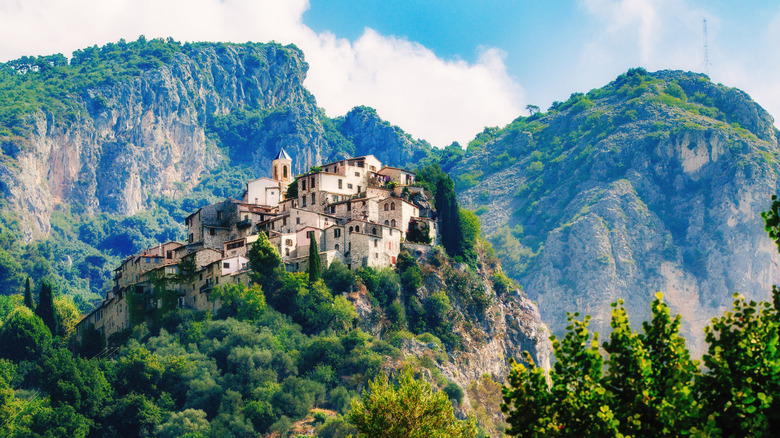A Hidden Village In France Where No Cars Are Allowed Offers Sweeping Views And Serene Streets
The moment you spot the French town of Peillon, you may find yourself full of questions. How did anyone build houses on top of a mountain? Why did they pick here, of all places, in an alpine valley 40 minutes from Nice? Was it a defensive strategy? A spiritual retreat? How did they transport food and water up there, especially way back in 1150, when the village was first mentioned in history books? Above all, how is any place so utterly beautiful?
There is no shortage of picturesque hill towns in France, but Peillon (pronounced "pay-YAWN") is one of the most spectacular, thanks to its clustered terracotta roofs, attractive stone walls, a nest of vegetation around its base, and the soaring cliffs beyond. An obscure location has kept this community largely unchanged for the past thousand years, and from the many lookout points, there isn't a billboard or burger chain in sight. The old hilltop village is just one part of Peillon, with additional development scattered below, but the total population is still only around 1,500 residents. Most striking of all, automobiles are forbidden in the upper reaches of Peillon; you can drive a switchback road to the edge of town, where you'll then have to park and proceed on foot.
Peillon's streets are a 3D maze
On a map, the hilltop village doesn't look very large — just a few elongated blocks of tightly packed houses. From end to end, the village doesn't quite span 600 feet, and most people can walk across in under five minutes. But the narrow walkways make this place feel dynamic and exciting; the houses are built almost entirely of weathered masonry, and the "streets" consist of slopes, stairways, stone arches, and tiny squares. With each turn, first-time visitors discover some new nook and cranny, including fine dining establishment Les Plaisirs. The French Riviera can get blisteringly hot and dry in the summertime, and the close-knit architecture provides ample shade. Spring and autumn are also great times to visit, when the crowds in southern France recede in earnest.
At the edge of the village and on certain high streets, you can gaze out on the valley below. Not surprisingly, a castle once stood at the top of this ridge, and watchmen would have benefitted from the 360-degree view of the surrounding landscape. Sometime in the 12th century — around the time the village started showing up in writings — the castle was replaced by a church, a yellow structure with a steeple and terracotta roof known as Saint-Sauveur. The façade is simple, which belies the ornate Baroque artwork within.
Unadorned traditional living in Peillon
Peillon is a traditional town that has resisted modernization, and if tourists are looking for big museums and action-packed nightlife, they may leave disappointed. There's only one hotel, the distinguished L'Auberge de la Madone, and the town gets pretty quiet after dark. Overnight options are far more plentiful as you descend the mountains back toward Nice, and backpackers will appreciate the La Laune campground and RV park located only about 6 miles down the road. In short, Peillon makes a fantastic day trip for travelers in the French Riviera, but only a fraction of the visitors will stay for longer than a few hours.
If you love the style and architecture of Peillon, there are many similar sites to check out while you're road-tripping through France. Medieval builders saw many advantages to constructing their homes so high up; today, these towns seem like the levitating capitals of fairytale kingdoms. Just 40 minutes from Peillon is another "floating" hill town, a Rick Steves favorite perched on the edge of the Mediterranean.


